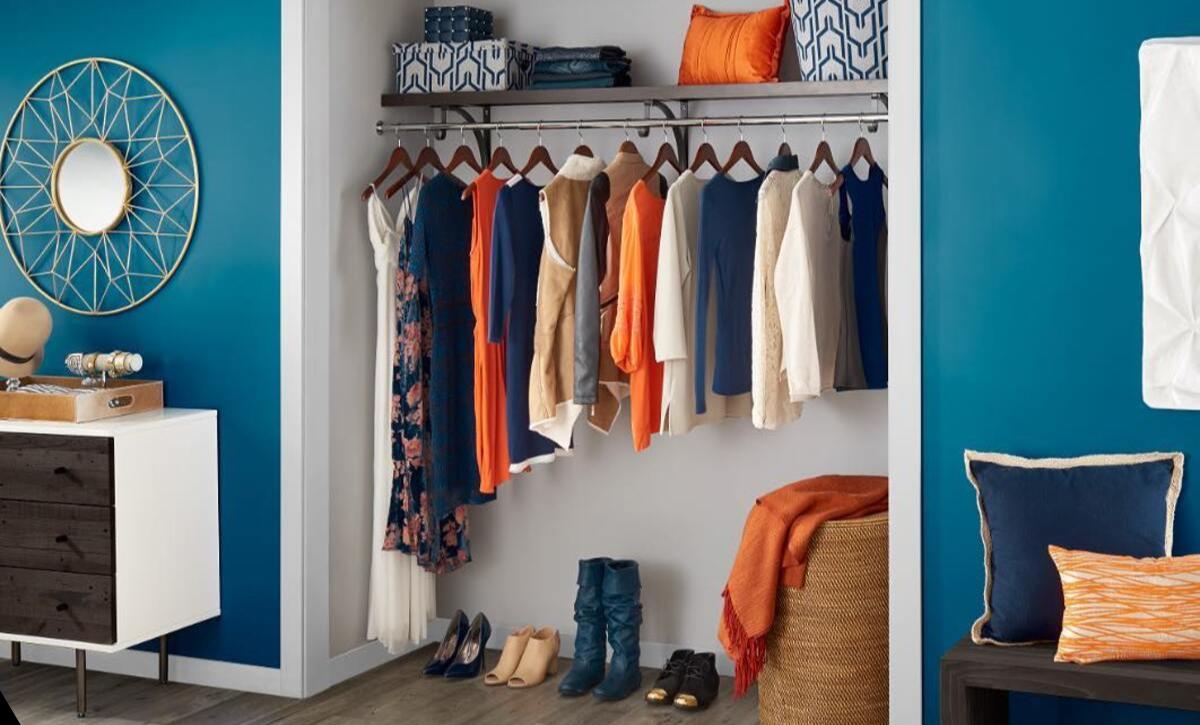Almost all of us have some items we are inertly attracted to and can’t resist buying. Obsession with these items is often about much more than variety. While there’s nothing wrong with tolerating a bit of guilty pleasures, these repeated purchases can pose a challenge, mainly if you have limited space.

Keeping a clean, tidy space is important for any home, and organization may become a cause of concern with repeated purchases and fewer square feet to store items. Limited space makes it hard to create a clear system for storing items. While our living spaces may be finite, there are simple guidelines that may help you reduce the clutter. One effective guideline that I have learned of recently is the one-in, one-out rule.
Clutter makes spaces appear too busy and chaotic and may even ruin the aesthetics of your entire interior design. Controlling such chaos is crucial in maintaining order and ensuring that your space is easy to clean. Here is some expert advice on implementing the one-in, one-out rule.
The One-In, One-Out Rule: What it Means?

As the name suggests, the one-in, one-out rule simply states for every new item that you bring to your space, a similar one must be removed.
Many modern styles emphasize minimalism, and since these styles become mainstream, many interior and organizing experts are recommending techniques like the one-in-one-out to keep clutter at bay.
Adopting this rule will allow you to maintain the number of items in your space so that you’re not overwhelmed with a high number of toys, decor items, figurines, or even clothes that you rarely wear.
Instead of waiting for clutter to accumulate and space to become chaotic, which may sometimes force a massive purge during decluttering, the one-in, one-out rule encourages a continuous process that allows you to maintain the ideal style and fullness of your home.
Benefits of the One-in One-out Rule

There are two upsides to using this rule. First, you curb the accumulation of clutter in your home, which helps you maintain order and balance. Second, this rule promotes mindfulness in consumption and spending, which will help you save in the long run. It also discourages impulsive shopping; you’ll have to think of whether you want to do away with the items you already have before buying another set or pair of a similar item.
Most of the time, it’s hard to recognize clutter in a space until it has already built up, and at this point, it’s usually too much to easily clean up. Adopting this rule will prevent the accumulation of clutter, hence reducing the need for a more extensive cleaning and editing project down the road.
It can also be valuable in teaching about mindfulness and sharing.
Applying this rule will ensure that your space is always full of intentional and useful items. When you have items you no longer use or that are worn out for your liking, you can donate them to another person who may find better use of them.
How to Ensure the Rule is Effective

The best way to ensure that this rule is effective is to focus on removing similar items or items in the same category and location as the newly purchased item. For example, if you buy a new plate, the old chipped one goes out. If you buy a new hoodie, the ratty-pilled one that you hardly wear leaves the wardrobe.
The rule may be ineffective if used with items in different categories or locations. For example, if you buy a new armchair for your living room and then remove a coffee table or desk lamp, you won’t get the same effect, and the decluttering won’t have a similar impact.
Make the Rule a Habit

As with any habit, the best way to make this rule successful is to start small and gradually progress. Keep a donation basket or bin in an accessible area, for example, near a closet, and start with items that you aren’t using and lack emotional value.
Start practicing the in-and-out rule as soon you unload a new shopping bag or unbox a package. Over time, start considering the item that you’ll move out or donate before making a purchase or adding another item to your collection. For example, when you purchase a brand new coat, as you hang it in your wardrobe, consider picking one that you don’t wear to donate.
Where Can the Rule be Applied

You can adopt this rule for all rooms in your home, especially in rooms that you decorate often or in areas where you make frequent purchases. This may be in the item category, from kitchen appliances to kids’ toys. For others, it may be clothing or wall art.
If you have a family, ensure they’re on board with the plan, too. Don’t shy away from explaining to your older children that they may have to let go of an older toy when you get them a new one. Over time, the rule will become a norm.
Remember, there are spaces where the rule may not work, such as when making crucial appliance purchases.








